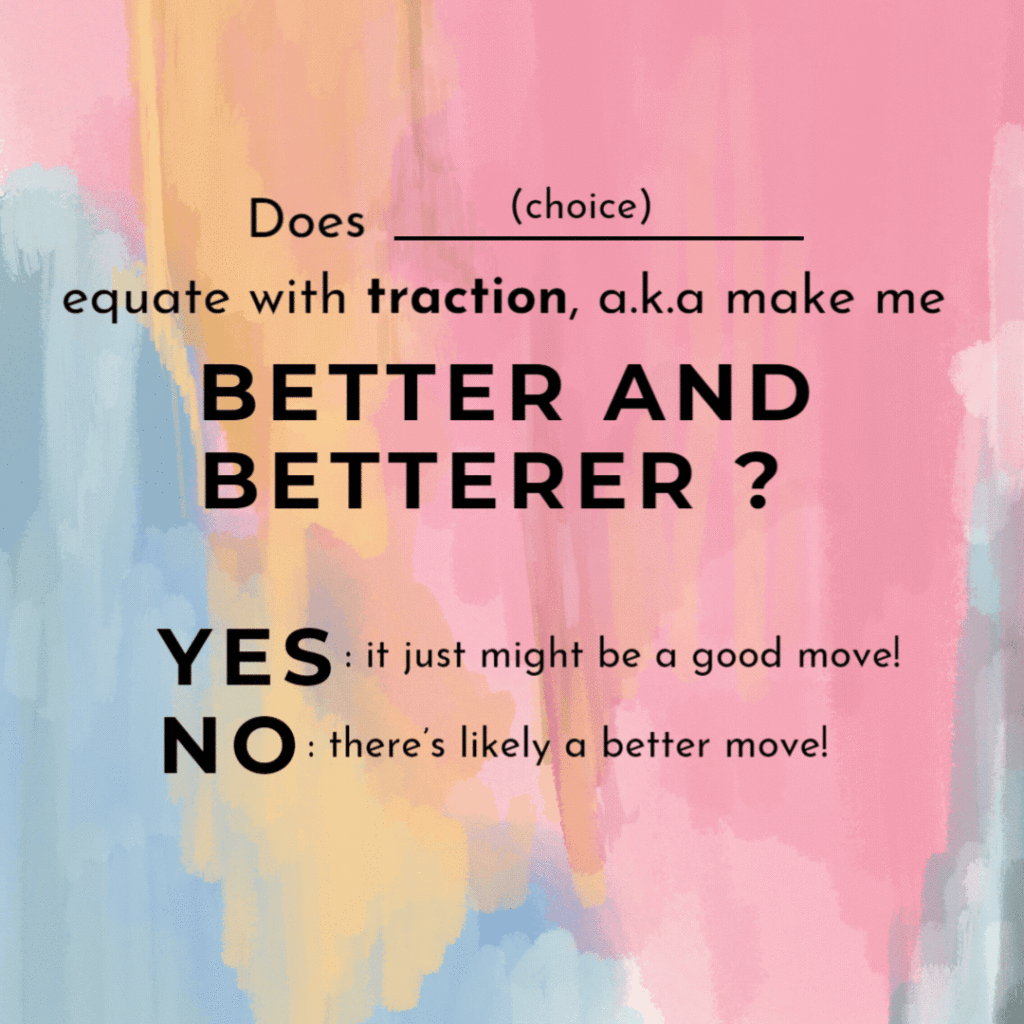We are all very versed in what distraction is, but how often do we stop and think about the opposite of distraction: TRACTION. Traction gets us moving towards our goals. Great. Now I know I should flip the coin of distraction over to see TRACTION, but… ummmmm… What does traction look like?
I invite you to consider what traction looks like across the 8 dimensions of wellness:
- Physical Dimension: Concerned with your current and future physical health. It involves staying fit and healthy through regular exercise and monitoring vital health indicators.
- Intellectual Dimension: Focuses on intellectual growth, curiosity, and lifelong learning. It includes valuing knowledge, acquiring new skills, and embracing intellectual challenges.
- Emotional Dimension: Involves understanding and managing your emotions and attitudes while respecting your own feelings and those of others. It’s about cultivating a positive and enthusiastic outlook on life.
- Social Dimension: Pertains to maintaining and nurturing healthy relationships, fostering friendships, and being part of a community. It emphasizes caring for others and allowing others to care for you.
- Spiritual Dimension: Encompasses uncovering and connecting to purpose, meaning, and value in life, often in connection with something larger than oneself. It also involves living in alignment with your beliefs and values.
- Vocational Dimension: Relates to finding fulfilling work that aligns with your values and goals. It’s about infusing your talents, skills, and unique gifts into your occupation, giving it deeper meaning.
- Financial Dimension: Focuses on managing your finances wisely, living within your means, making informed financial decisions, and preparing for short- and long-term financial goals.
- Environmental Dimension: Concerned with understanding how your surroundings impact your well-being. It includes making environmentally conscious choices and being aware of the effects your daily habits have on the planet.


You can additionally reflect on distractions:
- What pulls you away from traction each dimension of wellness?
- Is the effort required to make traction in one dimension pulling you away from making traction in another area of wellness? E.g. Imagine you have a high-paying job that demands long hours and frequent travel. While this might bring financial stability and success (financial traction), it can also lead to neglecting your physical health due to limited time for exercise and healthy eating. Another example: A highly social lifestyle with frequent socializing (social traction) may conflict with the ability to devote sufficient time and focus to vocational aspirations.
- Or are the distractions you find yourself spending time with less easy to map to a dimension, and perhaps more about avoiding pain, confrontation, conflict, etc?

Distractions as the Helpful/”Helpful” Antics of Parts
Distractions can serve as a temporary respite from the pains, annoyances, and discomforts in life. So if part of you tends to chime in telling you to have some brownies instead of responding to rude emails, that part is “helpfully” trying to protect you from the nuisance. If you notice this kind of “helpfulness,” it may help to journal — dialogue a conversation between you and that part. You can ask that part what it is afraid might happen if you don’t distract yourself, and listen with openness to its perspective. This process of befriending your parts may reveal ways your parts are stuck in old protective roles from past traumas or pains. With compassion, you can then help re-orient these parts to more constructive roles aligned with your current needs. So when distracting urges arise, pausing to journal and listen to those parts can illuminate their positive intent to keep you safe, and you can ultimately collaborate with your parts to help/”help” in a more productive way. For more on parts, please check out DiSC DiSCO™ (common personality parts) and IFS (Internal Family Systems).